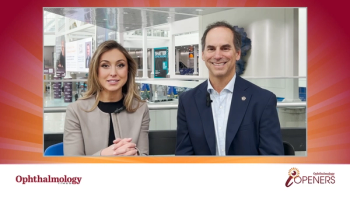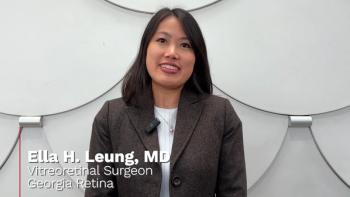
Tips for selling your practice
Selling your practice to a private equity investor is one way of responding to the challenges of practicing medicine today. But like other options, it has its pros and cons.
Reviewed by Reginald J. Sanders, MD, and Richard Garfinkel, MD
Private-equity investors are increasingly casting their eye on medical practices, including ophthalmology groups. Dozens of private-equity purchases of ophthalmology practices have occurred in the past five years. Not only do investors continue to scour the landscape for deals, but they may be finding more physicians receptive to their pitches or even making the first move.
The goal in the private-equity market is to make an established, often profitable business-in this case a medical practice-more valuable and to repackage and resell that practice for profit in a three- to five-year time frame. Private-equity investments are typically short term.
Ophthalmology has become a particularly attractive specialty area for investors because of its demographics: an aging patient base with increased prevalence of conditions such as cataracts, treated with elective procedures. Ophthalmologists are limited in number, creating greater demand for their services as well as higher compensation.
Also on the plus side are additional income streams (such as optical shops and ambulatory surgery centers) and the fact that most ophthalmology practices are not in competition with healthcare systems, said Reginald J. Sanders, MD, clinical associate professor of ophthalmology, Georgetown University School of Medicine. He is in private practice with The Retina Group of Washington.
The art of the buyout
Given the challenges of medical practice these days, interest in practice buyouts is understandable. It may be a way to become more competitive and profitable and retain more control than if the practice were owned by a hospital system. However, physicians need to understand the risks and perform due diligence, Dr. Sanders said.
As a rule, private-equity firms buy multiple practices and merge them into a regional or national brand; this consolidation and creation of a new company is referred to as a “rollup.” Value can be created by economies of scale and improving management. However, investors sometimes break up companies if a component (for example, a surgery center) is more valuable than the whole.
This trend of mergers and consolidations may seem familiar to physicians who were in practice in the late 1980s and early 1990s, when physician practice management groups were snapping up practices and promising that centralized management and deeper financial resources would help physicians deal with the growing “threat” of managed care and limited access to patients as well as help them acquire what was then new and very expensive information technology.
“With rare exceptions, these failed,” Dr. Sanders said. These failures occurred for a number of reasons, some of which have been amended in the deals being offered to physicians today.
Role of EBITDA
A private-equity transaction is based on a standard measure of operational profitability called EBITDA: Earnings Before Interest, Taxes, Depreciation, and Amortization.
“Typically for medical practices, EBIDTA is zero,” he said. “We take the money out, so we need to create EBIDTA, and the way to do that is to leave a certain percentage of your future compensation money on the table for private equity. You take less income, and the remainder provides cash flow for private equity.”
The purchase price is a multiple of EBITDA, potentially 10 to 12 times for an especially valuable practice. The seller receives that amount, with roughly 70% typically in cash and about 30% in stock in the new company. Shareholders (physicians) receive an agreed upon percent of the yearly corporate profits, with the remainder going to the private-equity purchaser. Physicians become employees of the newly created company.
For physicians considering a private-equity transaction, a few of the most important questions include whether the investors will actually be able to integrate multiple practices into a stronger, more successful organization. Do they have a good track record for similar investments and an experienced management team?
Check out the firm’s “platform” practice, typically the first acquisition in a geographic market, a large, successful group to which new, often smaller practices will be added, Dr. Sanders said.
How are practices added to the platform, and how much is paid for them? It’s also worth asking how large groups keep physicians motivated once they are employees. According to Dr. Sanders, studies have shown that physicians who are bought out by private equity produce 20% less.
Also, consider your personal response to being bought out. How much ownership and control of the practice would you retain? Would you be comfortable giving up some of your autonomy, or not being sure who you work for?
Think through some worst-case scenarios: What would be the impact of potentially losing some of your income? Are you willing to accept the risk of fluctuating interest rates or market conditions over a period of years? If the situation doesn’t work out, how restrictive is the non-compete clause? And how can you ensure that your practice will remain attractive to other physicians who may want to join you?
“In closing, a private-equity buyout can work in certain situations,” Dr. Sanders said. “However, due diligence and very thoughtful deliberation are necessary and crucial to see if it is the right situation for your practice.”
Reginald J. Sanders, MD
e: [email protected]
This article was adapted from Dr. Sanders’ presentation during Retina Subspecialty Day at the 2017 meeting of the American Academy of Ophthalmology. Dr. Sanders has no financial interests or relationships to disclose.
Richard Garfinkel, MD
e: [email protected]
Dr. Garfinkel has also spoken on this subject.
Newsletter
Don’t miss out—get Ophthalmology Times updates on the latest clinical advancements and expert interviews, straight to your inbox.










































